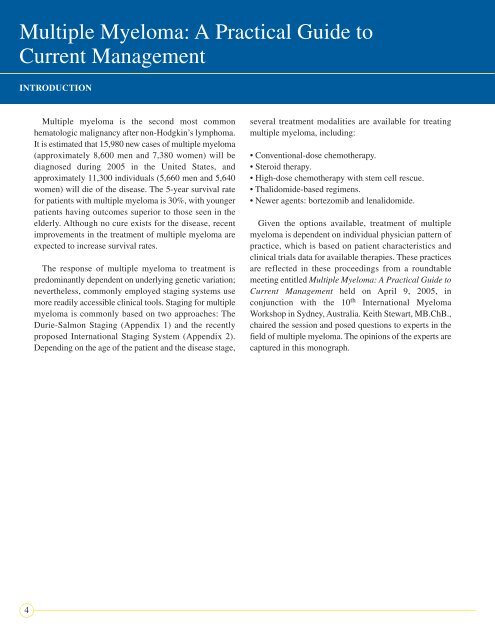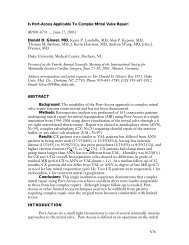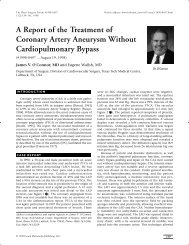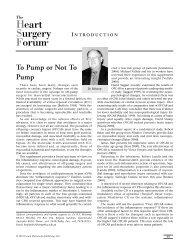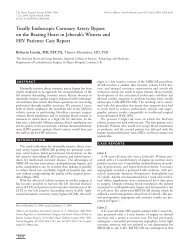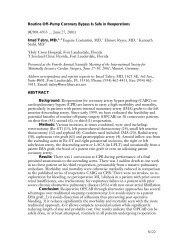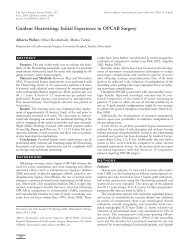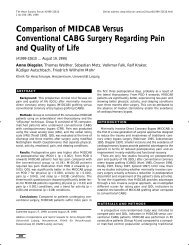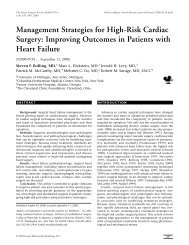Multiple Myeloma: A Practical Guide to Current Management
Multiple Myeloma: A Practical Guide to Current Management
Multiple Myeloma: A Practical Guide to Current Management
Create successful ePaper yourself
Turn your PDF publications into a flip-book with our unique Google optimized e-Paper software.
<strong>Multiple</strong> <strong>Myeloma</strong>: A <strong>Practical</strong> <strong>Guide</strong> <strong>to</strong><br />
<strong>Current</strong> <strong>Management</strong><br />
INTRODUCTION<br />
4<br />
<strong>Multiple</strong> myeloma is the second most common<br />
hema<strong>to</strong>logic malignancy after non-Hodgkin’s lymphoma.<br />
It is estimated that 15,980 new cases of multiple myeloma<br />
(approximately 8,600 men and 7,380 women) will be<br />
diagnosed during 2005 in the United States, and<br />
approximately 11,300 individuals (5,660 men and 5,640<br />
women) will die of the disease. The 5-year survival rate<br />
for patients with multiple myeloma is 30%, with younger<br />
patients having outcomes superior <strong>to</strong> those seen in the<br />
elderly. Although no cure exists for the disease, recent<br />
improvements in the treatment of multiple myeloma are<br />
expected <strong>to</strong> increase survival rates.<br />
The response of multiple myeloma <strong>to</strong> treatment is<br />
predominantly dependent on underlying genetic variation;<br />
nevertheless, commonly employed staging systems use<br />
more readily accessible clinical <strong>to</strong>ols. Staging for multiple<br />
myeloma is commonly based on two approaches: The<br />
Durie-Salmon Staging (Appendix 1) and the recently<br />
proposed International Staging System (Appendix 2).<br />
Depending on the age of the patient and the disease stage,<br />
several treatment modalities are available for treating<br />
multiple myeloma, including:<br />
• Conventional-dose chemotherapy.<br />
• Steroid therapy.<br />
• High-dose chemotherapy with stem cell rescue.<br />
• Thalidomide-based regimens.<br />
• Newer agents: bortezomib and lenalidomide.<br />
Given the options available, treatment of multiple<br />
myeloma is dependent on individual physician pattern of<br />
practice, which is based on patient characteristics and<br />
clinical trials data for available therapies. These practices<br />
are reflected in these proceedings from a roundtable<br />
meeting entitled <strong>Multiple</strong> <strong>Myeloma</strong>: A <strong>Practical</strong> <strong>Guide</strong> <strong>to</strong><br />
<strong>Current</strong> <strong>Management</strong> held on April 9, 2005, in<br />
conjunction with the 10 th International <strong>Myeloma</strong><br />
Workshop in Sydney, Australia. Keith Stewart, MB.ChB.,<br />
chaired the session and posed questions <strong>to</strong> experts in the<br />
field of multiple myeloma. The opinions of the experts are<br />
captured in this monograph.


